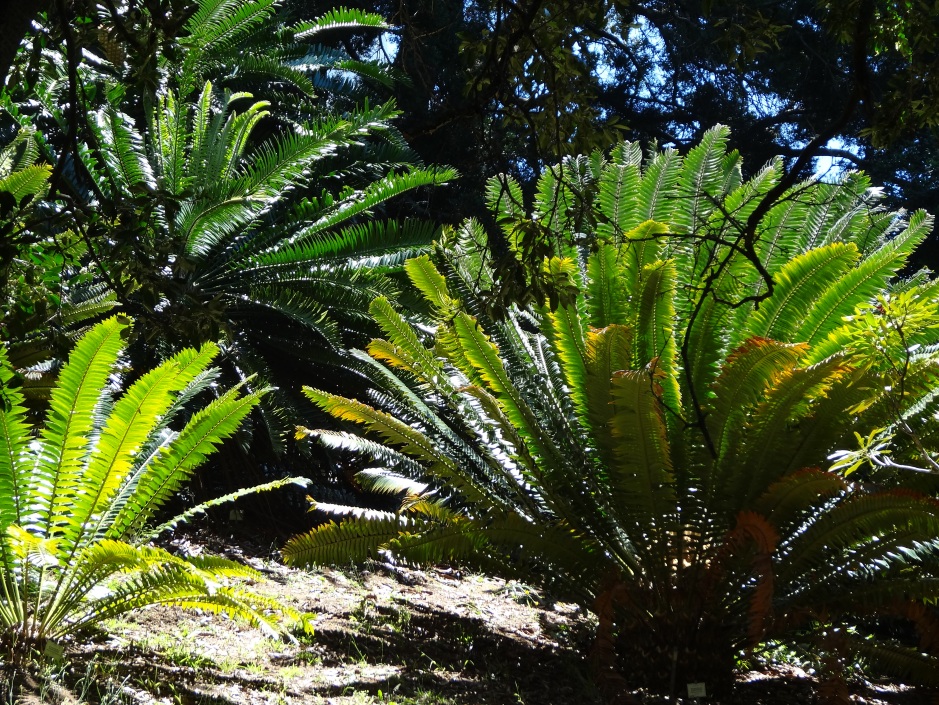It’s 200 million years ago, the climate is turning from dry to humid, the great landmasses of Laurasia and Gondwana are forming, this is the Age of Reptiles, large herbivorous dinosaurs and the first birds. The humid conditions allow the development of lush jungles – Conifers dominate with Ginkgos, Dicksonian tree ferns and the beautiful Cycads.
Cycads belong to a plant group almost unchanged since that Age of the Dinosaurs. They make striking focal plants.
They are much sought after and, as a result, many are virtually extinct in the wild.
Only one clump of Encephalartos woodii has ever been found in the wild, in 1895. Although it is now extinct in the wild, it exists in cultivation.
To see cycads planted en masse is a striking sight.
Male and female cycads are distinguished by the size and shape of their cones. Male cycads have cones which are smaller and narrower than the female, which produce masses of pollen carried to the female by certain insects. The female cones, which produce ovules, eventually fall apart releasing the seed. These are female cones below.
For those of us in cooler climates, the conservatories of many Botanic Gardens provide the lush tropical atmosphere to display cycads.
A walk through the enveloping lush greenness is a great way to stimulate a child’s imagination about the Jurassic Age.
(All photography mine; feel free to use any of Jardin’s images but please credit and link back)









Great set!
LikeLike
Thanks!
LikeLike
A spectacular plant that I’ve only seen in glass houses
LikeLike
Yes it’s very striking – both under cover and in the wild.
LikeLike
So lovely. My daughter and I just paid a visit to our local conservatory last week, it really is such a wonderful therapy during the long winter months to go there and walk among the lush, tropical atmosphere. Funny… she mentioned dinosaurs while we were there! 😀
LikeLike
That’s amazing. Yes, nice to escape into the warmth and greenery!
LikeLike
Magnificent! Thank you so much for sharing.
LikeLike
Thank you. Glad you enjoyed it!
LikeLike
Wonderful post. We can grow some cycads in this area and I have a couple in my yard. Our local arboretum has Jurassic area for the kids to enjoy.
LikeLike
Thank you!
How lovely to have cycads – I had them in South Africa – and the Jurassic area sounds a great idea.
LikeLike